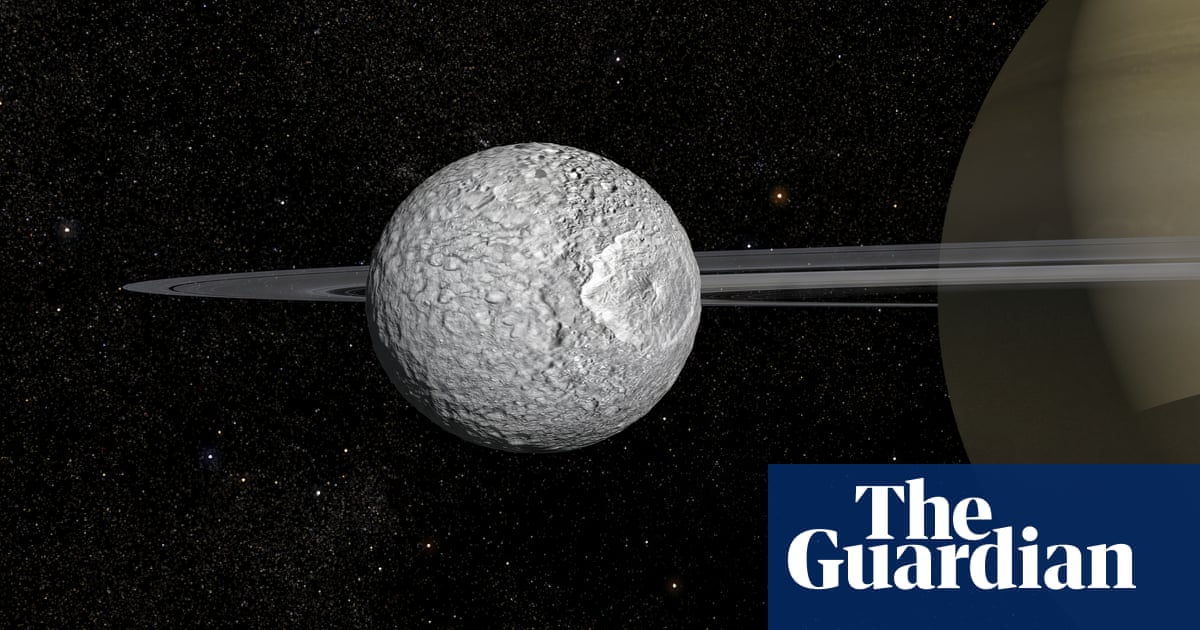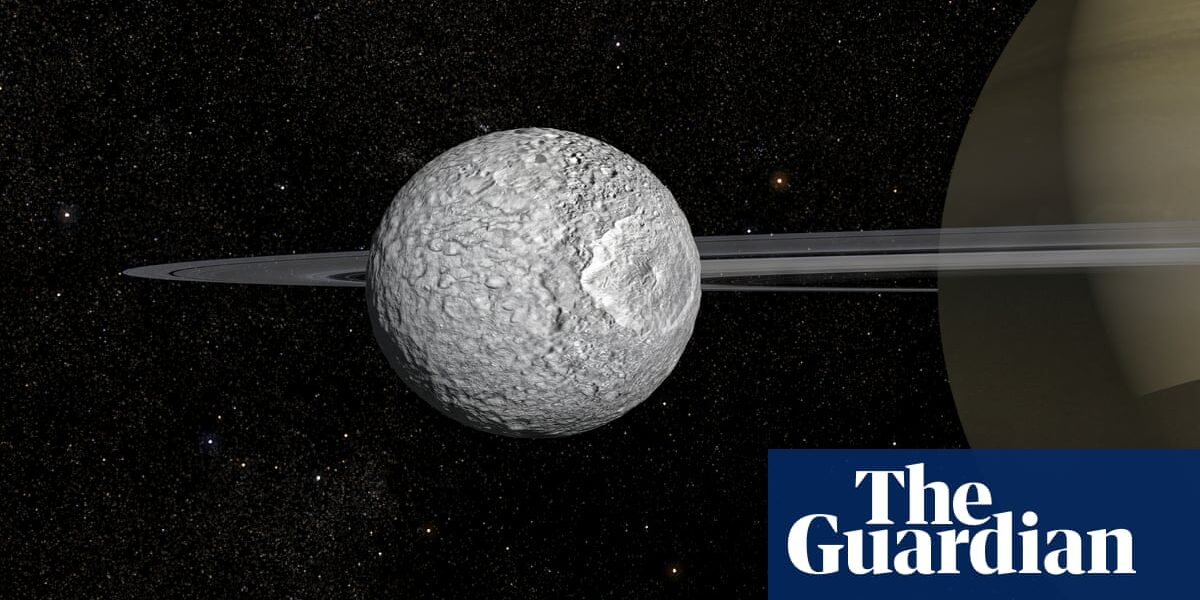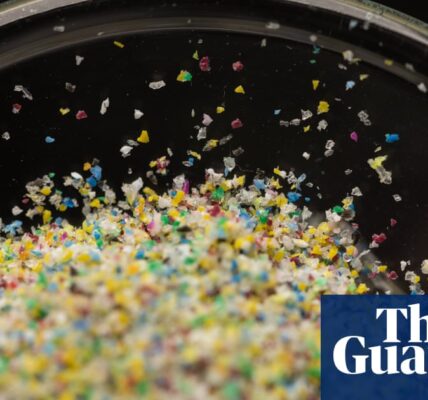Scientists have discovered that Saturn’s moon, known as the ‘Death Star’, contains a secret ocean beneath its surface.

Scientists say that a moon orbiting Saturn, which bears a striking resemblance to the Death Star in Star Wars due to a large impact crater, contains a concealed ocean buried deep beneath its damaged outer layer.
The surprising finding reveals that Mimas, a frozen sphere with a diameter of 250 miles, has now joined the select group of moons known to have underground oceans. This includes Saturn’s Titan and Enceladus, as well as Jupiter’s Europa and Ganymede.
Valéry Lainey, an astronomer from France’s Observatoire de Paris, expressed surprise at the discovery. According to Lainey, there are no visible indications of a subsurface ocean on the surface of Mimas, making it an unlikely candidate.
Astronomers have considered two potential explanations for the unique orbit of Mimas: either it has a stretched inner core covered in ice, or an internal ocean that enables its outer layer to move separately from the core.
After examining numerous images from Nasa’s Cassini mission to Saturn, Lainey and his team were able to reconstruct the exact rotation and orbit of Mimas as it orbited around the planet. Through their calculations, they determined that Mimas likely has a concealed ocean underneath its surface in order to exhibit its observed movements.
According to Lainey, it is impossible to accurately describe the rotation of Mimas and its orbital path using a solid interior. A global ocean is necessary for the icy shelf to move freely.
According to their computations, there is a vast ocean estimated to be 45 miles deep beneath the 15-mile-thick icy surface of Mimas. The temperature near the bottom of the ocean is believed to reach tens of degrees Celsius. This ocean would make up over half of Mimas’s overall volume. The findings have been published in the journal Nature.
Mimas’s ocean is considered youthful by astronomical measurements, having formed within the last 25 million years. This occurred due to the intense gravitational pull from Saturn, which caused the moon’s core to undergo deformation and heat up similar to a squeezed squash ball. As a result, the heated core melted the ice covering it, resulting in an ocean within Mimas. Despite this, the surface of the moon remains heavily damaged, with a large impact event forming the Herschel crater, named after the astronomer William Herschel who discovered Mimas in 1789.
The revelation of oceans on moons orbiting Saturn and Jupiter has sparked a surge of curiosity from space organizations excited to investigate their potential for supporting life. Over 100 geysers have been observed on Enceladus, releasing vapor through cracks in the surface. If any form of life developed on this small moon, the plumes could eject extraterrestrial microorganisms into space, potentially being detected by visiting spacecraft.
According to Lainey, the presence of water and warm rock on Mimas suggests that the possibility of life cannot be dismissed. However, if the concealed ocean is relatively young, estimated to be only tens of millions of years old, it is possible that life has not yet developed. Lainey acknowledges this uncertainty by saying, “Whether it is too young, remains unknown. But why not consider the possibility?”
According to David Rothery, a professor specializing in planetary geosciences at the Open University, even if Mimas contained an underground ocean, there are more accessible locations to search for extraterrestrial life. Rothery notes that there is no evidence linking the potential habitable internal ocean to the surface or space where signs of life could be detected and collected, as has been done with the plumes of Enceladus and may eventually be done on Europa’s surface or in its plumes. Rothery also adds that if there were life on Mimas, it would be concealed by over 20km of solid ice.
“If the ocean has only been in existence for 25 million years, it may not have had enough time for life to begin and flourish. Europa and Enceladus are much more viable options.”
Source: theguardian.com



